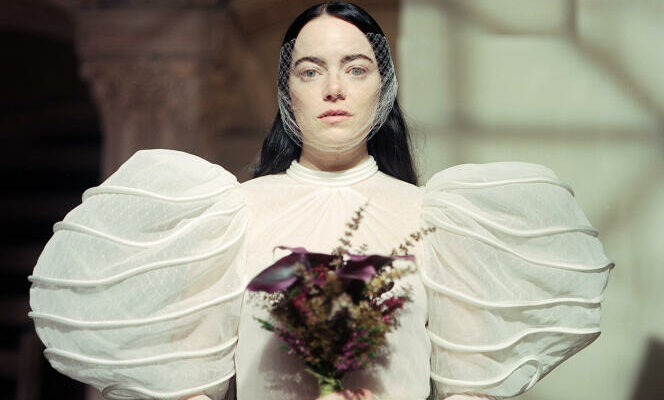Cinema technicians always have the same phrase on their lips when we ask them about their work. “My goal is to serve the film and the script. » Holly Waddington, who designed the outfits for the characters in Poor creatures, by Yórgos Lánthimos, is no exception. However, she adds: “When I saw the film, I realized that the costumes were perhaps more spectacular than I had imagined. »
Indeed, if the costumes of this stylized fantasy fable, which takes place in the Victorian era and sees Bella, a strange ingenue (Emma Stone) taste the pleasures and acidities of the world for the first time, serve the film, they are sometimes the most spectacular aspect.
Trained in historical costume, Holly Waddington proved herself on the stages of London’s West End, then in the world of ballet and contemporary dance, gradually imposing her name on the cinema as a costume designer assistant on the sets of Steven Spielberg and Bryan Singer. We guess she is well informed about the history of art: the outfits of Poor creatures evoke in turn the paintings of Max Ernst and Salvador Dalí, the crazy volumes of Alexander McQueen’s creations or the avant-garde daring of Elsa Schiaparelli.
“ We used a lot of English dress patterns from the 1890s, with these lamb sleeves which were like a demonstration of the power of the garment. But we also had, in our inspirations, magnificent images of guts or intestines,” she explains.
Paintings with changing moods
In harmony with the film’s settings, revived by the saturated colorization of the image, the costumes inject the supernatural everywhere, notably by playing with unconventional materials for period costumes. “In one scene, Bella’s character wears a blue jacket with bright yellow pants, the material of which resembles spongy flesh, a bit like cellulite. » And for the heroine’s wedding dress, Holly Waddington and her team of around fifty dressmakers and assistants used plastic veil tulle.
Started at the edge of the first confinement, his work on the film took place in two parts: five weeks of preparation in London, and twenty weeks on the filming location, in Budapest, where all the craftsmen (decorators, prop makers… ) worked side by side in a huge hangar. “We used local techniques, which are a little different from London know-how, and also had to deal with traffic restrictions linked to Covid and Brexit. Many of the fabrics we were bringing in from the UK were held up at customs. So we took advantage of materials found in Hungary, including a lot of polyester imported from China. »
You have 20% of this article left to read. The rest is reserved for subscribers.
